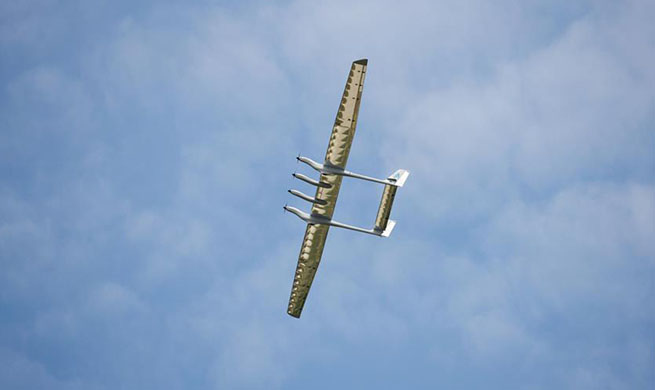SEOUL, July 31 (Xinhua) -- Samsung Electronics, South Korea's tech giant, saw its operating profit halve in the second quarter on the continued slump in semiconductor and smartphone businesses, the company said Wednesday.
Operating profit was 6.6 trillion won (5.6 billion U.S. dollars) in the April-June quarter, down 55.6 percent from the same period of last year. It was slightly up from the preliminary reading of 6.5 trillion won (5.5 billion U.S. dollars) announced earlier this month.
Compared with Samsung's record quarterly high of 17.6 trillion won (14.9 billion U.S. dollars) in the third quarter of last year, the second-quarter figure was just one-third of it.
Revenue declined 4 percent over the year to 56.13 trillion won (47.5 billion U.S. dollars) in the June quarter, and net income tumbled 53.1 percent to 5.18 trillion won (4.4 billion U.S. dollars).
The earnings drop came amid the continued downturn in business cycle of the global semiconductor industry that led to lower chip price.
Adding to the concern, Japan tightened regulations early this month on its export to South Korea of three materials vital to memory chips and display panels, which are the mainstay of Samsung earnings.
The ratio of operating profit to revenue for Samsung, which gauges profitability, came to 11.8 percent in the second quarter, the lowest since the third quarter of 2016.
Samsung's chip business recorded an operating profit of 3.4 trillion won (2.9 billion U.S. dollars) on revenue of 16.09 trillion won (13.6 billion U.S. dollars) in the second quarter. It was the lowest operating profit in almost three years.
The ratio of operating profit to revenue in the chip-making unit was 21.1 percent in the second quarter, the lowest in five years.
Samsung said in a statement that the weakness and price declines in the memory chip market persisted as effects of inventory adjustments by major datacenter customers in the previous quarters continued.
The IT and mobile division, which produces smartphones, logged an operating profit of 1.56 trillion won (1.3 billion U.S. dollars) on revenue of 25.86 trillion won (21.9 billion U.S. dollars).
The operating profit was down 41.6 percent from a year ago on an increased marketing cost and the weaker-than-expected sale of Galaxy S10 smartphones.
Samsung said the mobile business was overall weighted down by slower sales of flagship models and an increased marketing expense.
The display panel unit reported an operating profit of 750 billion won (635 million U.S. dollars) on revenue of 7.62 trillion won (6.4 billion U.S. dollars) turning around from an operating loss in the previous quarter.
The turnaround was attributed to a one-time gain and a gradual recovery in customer demand, the tech company said without elaborating on what the one-time gain was.
The consumer electronics business posted an operating profit of 710 billion won (601 million U.S. dollars) on revenue of 11.07 trillion won (9.4 billion U.S. dollars) in the second quarter.
The profit was up from 510 billion won (431 million U.S. dollars) tallied a year earlier thanks to strong sales of new appliance products and improved profitability of refrigerators and washing machines, Samsung said.
Samsung said it was facing challenges from uncertainties not only in business areas but also from changes in the global macroeconomic environment.
The South Korean company noted that it will continue to invest in future technologies, including 5G, system chips, artificial intelligence and automotive components for longer-term growth.
Samsung's capital expenditure in the second quarter stood at 6.2 trillion won (5.2 billion U.S. dollars), including 5.2 trillion won (4.4 billion U.S. dollars) spent on semiconductors and 500 billion won (423 million U.S. dollars) on display panels.
Total capital expenditure in the first half was 10.7 trillion won (9.1 billion U.S. dollars), including 8.8 trillion won (7.4 billion U.S. dollars) for semiconductors and 800 billion won (677 million U.S. dollars) for display panels.
For the first six months of this year, Samsung's revenue reduced 8.9 percent to 108.51 trillion won (91.8 billion U.S. dollars) compared with the same period of last year.
The operating profit plunged 58 percent over the year to 12.83 trillion won (10.9 billion U.S. dollars) in the first half.













